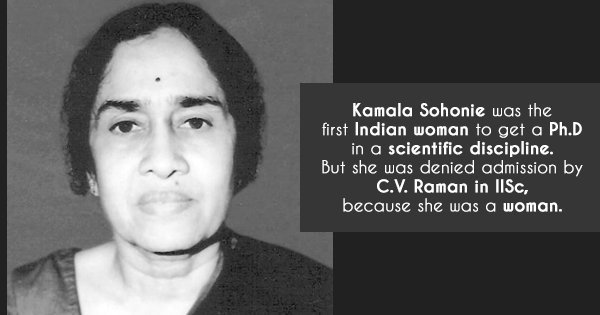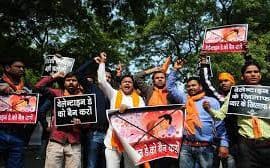In a country where women are still told which professions are suitable for their gender, Sohonie is an inspiration who literally helped open the doors of research in science to women. If somebody ever says “women are not cut out for science”, use excerpts from Sohonie’s story to inspire you forward.
“Kamala Sohonie was a quiet, unassuming person. A woman of few words.”- Vasumati Dhuru, an Indian author.
This woman of few words, born in 1911, had decided as a young child that she would become a renowned chemist just like her uncle because she resembled him in appearance. The hurdles, struggles, and misogyny did not exist for the young kid’s resolution. That did not deter her from going on to earn the title of the “first female PhD-holder of India”. Her contemporaries were budding to satiate their love for curiosity, but Dr. Sohonie had to pay the penalty of rebuke and ostracisation for her curiosity, despite the unwavering support of her highly-educated family.
Graduating first in her BSc course class from Bombay University, she challenged the first Asian Nobel Laureate in Physics- Dr. C.V. Raman- when he refused her admission for Master’s at the Indian Institute of Science based on her gender. She publicly stated later on, “I can never forget the way he treated me just because I was a woman. This was a great insult to me.” Yet when it came to enduring his unnecessary conditions for allowing her an education at the Indian Institute of Science, she did it all for the love of science. Professor Raman began to admit female students after Kamala’s work captivated his scientific mind. She surpassed the stereotype and opened the door, quite literally, for female curiosity.
She won a scholarship for Cambridge, then a fellowship at the laboratory of Fredrick G. Hopkins. Less than 16 months after working under the Nobel Laureate, she submitted a thesis on the role of cytochrome-C in the respiration of plant tissue. Her doctorate was one of the landmarks for the entire science community because it was merely forty pages in length, when theses of over ten thousand words were a common convention.
Returning to India in 1939, she became a professor and the HOD of biochemistry at Lady Hardinge Medical College, New Delhi. She joined the Royal Institute of Science in Bombay as a professor in 1947, but it took her four years to head the department because of gender biases and politics. This Rashtrapati Award winner who worked on ‘Neera’ collapsed and died, 86, at the Indian Council of Medical Research shortly after her honouring ceremony, in a setting she strived in her life to be a part of.
Image Credits: Feminism in India
Anushree Joshi




Comments are closed.